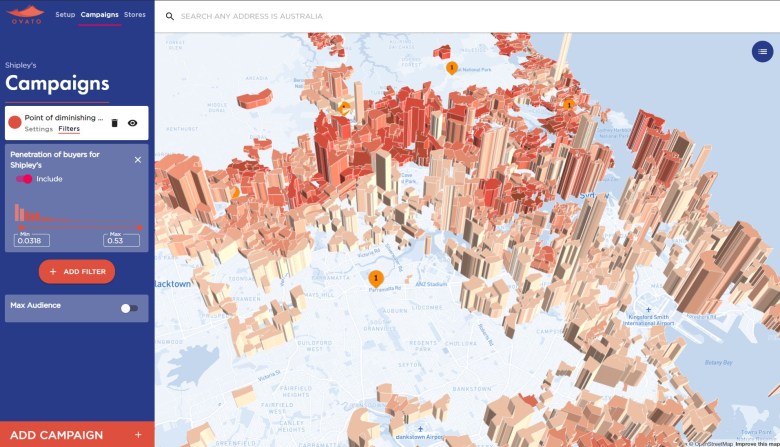
Australian print, marketing and distribution giant, Ovato, has long said harnessing data to deliver increased return on investment for customers is a crucial ingredient for an industry that is under pressure, both from within itself and from the pervasive digital world.
Years of work have now led Ovato, which was formed through a merger of IPMG and PMP, to release a new data visualisation tool which it says will provide the high level data that the printed medium has long needed, especially for marketers accustomed to reading the detailed statistics that digital channels can easily produce.
Ovato chief innovation and marketing officer Ben Shipley has led the Atlas project and says even though this is a challenging time to be launching something new, the outcomes with two large pilot customers have been very promising.

Atlas is based on years worth of data provided by Ovato’s research partner, Quantium, but Ovato has added some new dimensions. These include the use of aerial drone footage to get a visual handle on a particular location with the maps showing a density-by-colour type image to help marketers pinpoint the best place for their catalogues to land.
Shipley says this aerial function could be applied to a number of different targets, for example areas with a high proportion of solar panel installations or swimming pools.
Traditionally this data would have been guessed at by judging it off socio-economic factors, but now it can be more targeted and help inform where catalogues or marketing material should be distributed for maximum ROI for the customer.
Shipley says using this kind of detailed data which can be extrapolated in a multitude of ways using different filters will go a long way to breaking down old notions of relying on geographical targeting for delivery of marketing material to a certain radius from the actual bricks and mortar store.
It drills down deeper, calling on data from the Australian Bureau of Statistics, mobile phones and inputs from supermarket purchases.
“As an industry we have been slow to provide our clients with these tools and Atlas is really about stepping that up,” Shipley told Sprinter.
“Print is considered to be in the manufacturing business and the business of marketing.
“A lot of the sales and processes that have evolved in the industry have been around a manufacturing approach where it is all about materials and minimal costs for an agreed output.
“But now more than ever, all of our clients, are demanding added value and are asking ‘how do we get an improvement on spend’.
“I’m certainly sick of giving away margin as the ‘added value’ when there’s actually tangible results that we can show in terms of lifting the performance of how are clients perform in this channel. I’d much rather be having conversations about how we can do better for our clients, rather than how can we do it cheaper.”
To watch a Zoom video snippet of Shipley talking about the threat digital channels pose for print, please click here.
Shipley said the digital world is by far the biggest threat to print but marketing in the digital space is not as easy as it seems.
“The consequences of big digital pivot is actually when more people get into digital, the cost to reach an effective customer goes up,” he said.
“You can go on Facebook and when you use the audience and targeting tools, it will say that there’s 18 million Australians on the platform and that is your potential audience.
“What they don’t really talk about is that this platform is not really a good way to reach all 18 million people. You need to spend a lot of money and be in market for a very long time to actually get that sort of reach which is about about 67 per cent of the total market in Australia.”
Shipley said essentially this new tool will allow Ovato’s customers to better target their campaigns.
“What it’s allowed us to do is really have a conversation with our clients that may be just using physical distance isn’t really the best way to be targeting the marketing spend,” he said.
“We’ve done a lot of work looking at historic catalogue campaigns as well. And one of the key learnings that we’ve come out from that process was that people will travel a lot further to a store than originally thought.”
Comment below to have your say on this story.
If you have a news story or tip-off, get in touch at editorial@sprinter.com.au.
Sign up to the Sprinter newsletter

